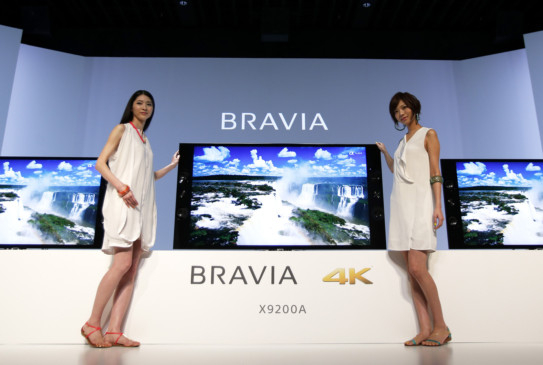
Dubai
Most television brands are counting on ultra high-definition (UHD) liquid crystal display television (LCD-TV) sets to rejuvenate sales and they are going to grow at a faster pace than the normal LCD TVs this year.
Ultra high-definition TV or 4K TV will be more in demand than organic light emitting diode (OLED) due to the cost factor.
Many low-cost 4K TVs will be produced this year. They boast a pixel format of 3840 x 2160 pixels, four times that of current 1920 x 1080p Full HD TVs, and have great clarity and depth.
“Due to the awesome viewing experience, many consumers are likely to own one of these ultra-high definition (4K) TVs despite the cost factor,” Sweta Dash, senior director for display research at IHS, told Gulf News.
Global ultra-high definition TV shipments are expected to reach 10 million this year compared to 1.6 million last year, a growth of 525 per cent. Meanwhile, the global LCD shipments are expected to grow 4.31 per cent to 216.76 million this year compared to 207.8 million last year. Dash said that 4K TVs are gaining acceptance across the world as Taiwanese suppliers are reducing the panel prices and Chinese brands are offering low-priced 4K TVs.
“We are seeing a big shift towards 4K TV acceptance this year. Some of the brands have reduced the prices of 4K TVs in the second half,” she said. Sony, Samsung, LG, TCL, Toshiba, Philips, Nakamichi, Skyworth and Hisense have launched 4K TVs in the UAE with prices ranging from Dh6,999 to Dh100,000.
“We have increased our forecast for this year as many Chinese panel suppliers have started producing relay low-priced panels and up to 39-inch 4K panels. However, many Chinese-made panels are not considered as best quality because the upscaling technology is not that good when compared to makers like Samsung, LG and Sony. But many will buy because of the low-cost factor and wanted the emerging technology in their living room,” she said.
OLED TVs will really “serve the high end of the market.” The cost is very high. The cost is almost eight times higher than the same size LCD TV.
Price reduction
The concern is “whether consumers will pay that much for an OLED TV just for the high picture quality. It will take some time for panel manufacturers to reduce the price of OLED panels and the volumes produced also are not that high,” she said.
Globally, around 41,000 OLED TVs are likely to be sold this year compared to 3,000 last year. In the MEA, only 8,000 are expected to be sold this year compared to 100 last year.
She said the adoption of this emerging technology will be slow due to its price factor. Only early adopters will purchase OLED TVs. “A new technology that is coming to the LCD sector, known as Quantum dot, will help increase the picture quality as close to OLED TV. This year we can see some improvements in LCD picture quality,” Dash said. Most of the TV manufacturers are expected to launch curved OLED TVs next year.
Last year, many people did not replace their TVs and bought tablets to watch their favourite channels. This impact is going to continue until 4K TV prices come down drastically and 4K content is available on a mass scale. Tablets are slowly eating into the TV market. Many people are watching video services on tablets now.
“With the availability of many video services on tablets now, people spending on televisions will become less, so manufactures “need to innovate” to force consumers to replace their old sets and tablets and that’s why television brands are working hard to promote exciting new technologies in bid to bring the wow factor to the TV market and trigger demand,” Dash said. She said that if content and TV prices become “affordable”, consumers will replace their tablets with 4K TVs.
“...TVs are priced 45 per cent higher than the Full HD TVs but the price difference is expected to fall to around 15 per cent by the end of this year,” Deepak Babani, CEO of Eros Group and the main distributor for Samsung products in the UAE, said.












